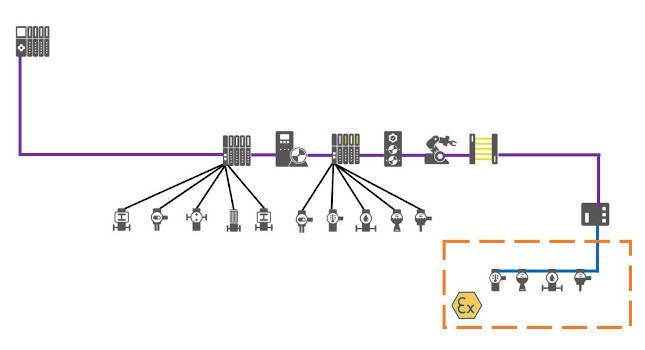Three types of Profibus device types explained
Profibus devices come in three different classes and each has a specific role they play on the plant floor.
Profibus devices are divided into three classes based on their functions:
- Profibus DP master (class 1)
- Profibus DP master (class 2)
- Profibus device.
1. Profibus DP master (class 1): A Profibus DP master of class 1 (DPM1) is a master who uses cyclical communication to exchange process data with its associated devices. Devices of this type are often integrated into a memory programmable controller or an automation station of the process control system.
2. Profibus DP master (class 2): A Profibus DP master of class (DPM2) was originally defined as a master used as a tool in the context of Profibus system commissioning. In the course of the DP-V1 and DP-V2 functional expansions, a DPM2 has been more specifically defined as a master which can be used to set device parameters via acyclical communication. Devices of this type are usually part of an engineering station used for device configuration. A DPM2 need not be permanently connected to the bus system.
3. Profibus device: A Profibus device is a passive communication node that reacts to prompts from the master by sending a response message. Devices in this class are usually field devices (remote I/O, drive, valve, transducer, analyzer) that acquire process variables or play a part in the process utilizing manipulated variables. A differentiation is made between compact and modular devices.

Example of a Profibus network. Courtesy: PI North America
A modular device comprises a head station containing the fieldbus interface and several slots into which various modules can be inserted. By combining different modules, modular devices can be adapted flexibly to respond to prevailing input and output data requirements. Compact devices have a fixed set of input and output data – comparable to a modular device with precisely one permanently installed module.
The majority of devices in process automation are modular devices on which, rather than being physically present, the individual modules exist in the device software (virtual modules). These virtual modules are activated or deactivated when cyclic communication is established. The virtual modules, of which a device in process automation can make use, are specified in the profile for PA devices.
Frequently, Profibus master devices support the functions of a DPM1 and a DPM2. Similarly, there are also automation devices that can operate as both masters and devices. In practice, it is rarely possible to unequivocally categorize physical devices into the function classes outlined above.
This article originally appeared on PI North America’s website. PI North America is a CFE Media content partner. Edited by Chris Vavra, web content manager, Control Engineering, CFE Media, cvavra@cfemedia.com.
Original content can be found at us.profinet.com.
Do you have experience and expertise with the topics mentioned in this content? You should consider contributing to our CFE Media editorial team and getting the recognition you and your company deserve. Click here to start this process.


